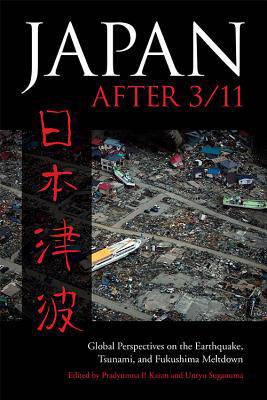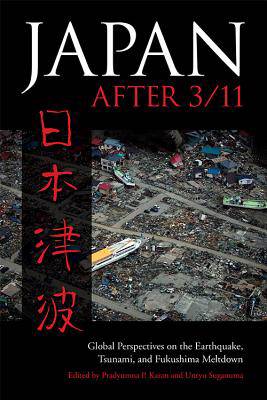
- Afhalen na 1 uur in een winkel met voorraad
- Gratis thuislevering in België vanaf € 30
- Ruim aanbod met 7 miljoen producten
- Afhalen na 1 uur in een winkel met voorraad
- Gratis thuislevering in België vanaf € 30
- Ruim aanbod met 7 miljoen producten
Japan After 3/11
Global Perspectives on the Earthquake, Tsunami, and Fukushima Meltdown
Omschrijving
On March 11, 2011, an underwater earthquake off the Pacific coast of Tohoku, Japan, triggered one of the most devastating tsunamis of a generation. The aftermath was overwhelming: communities were reduced to rubble, thousands of people were missing or dead, and relief organizations struggled to reach affected areas to provide aid for survivors and victims of radiation from compromised nuclear reactors.
In Japan after 3/11, editors Pradyumna P. Karan and Unryu Suganuma assemble geographers, economists, humanists, and scientists to consider the complex economic, physical, and social impacts of this heartbreaking disaster. Historical geographers place the events of March 2011 in context, while other contributors assess the damage and recommend strategies for the long process of reclamation and rebuilding. The book also includes interviews with victims that explore the social implications of radioactive contamination and invite comparisons to the discrimination faced by survivors of the Hiroshima and Nagasaki bombings. Balancing the natural and social sciences, this timely volume offers not only a model of interdisciplinary research for scholars but also an invaluable guide to the planning and implementation of reconstruction.
Specificaties
Betrokkenen
- Uitgeverij:
Inhoud
- Aantal bladzijden:
- 496
- Taal:
- Engels
- Reeks:
Eigenschappen
- Productcode (EAN):
- 9780813167305
- Verschijningsdatum:
- 27/09/2016
- Uitvoering:
- Hardcover
- Formaat:
- Genaaid
- Afmetingen:
- 155 mm x 236 mm
- Gewicht:
- 884 g

Alleen bij Standaard Boekhandel
Beoordelingen
We publiceren alleen reviews die voldoen aan de voorwaarden voor reviews. Bekijk onze voorwaarden voor reviews.










